sustainable design meets vernacular chinese tradition in the well house
well house combines Space, Nature and Wellbeing
ATLAS Studio has designed ‘Well house’, a cluster of timber buildings within the 1,000-year-old Miao mountain village in Jiayi, China. Inspired by the amorphous scenery of the area and the vernacular architecture, the final result takes shape as a timber frame structured complex of buildings that function as a modern wellness hotel. The aim of the project was to preserve local culture and follow a sustainable design strategy, all the while forming a space for physical and spiritual healing.
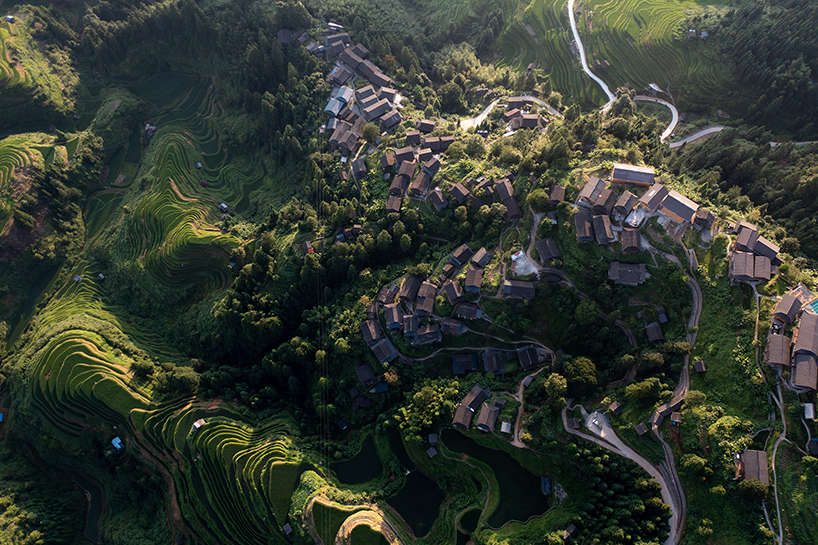
the Miao mountain village in Jiayi | all images by ATLAS Studio
four timber houses that connect with the environment
Due to the site limitations, four separate houses were selected to construct the hotel after demolishing the old house in location. Two of the wooden houses are planned for accommodation with nine guest rooms in total, the third one is the reception center, and the fourth one serves as a yoga center. In the process of forming the layout of these buildings, the design team followed some basic architectural disciplines, such as the modernization of the timber frame structure.
The Miao stilted building is a common dwelling structure and the challenge of its construction technology is to use small pieces of timber to build bigger scaled houses. Each building is structured in a way that allows transparency and unhindered indoor and outdoor views. In that way, the placement of the windows played an important part in the interior arrangement. More specifically, the nine guest rooms have a 270° ultra-wide-angle landscape view, allowing guests to communicate with the natural scenery anytime.
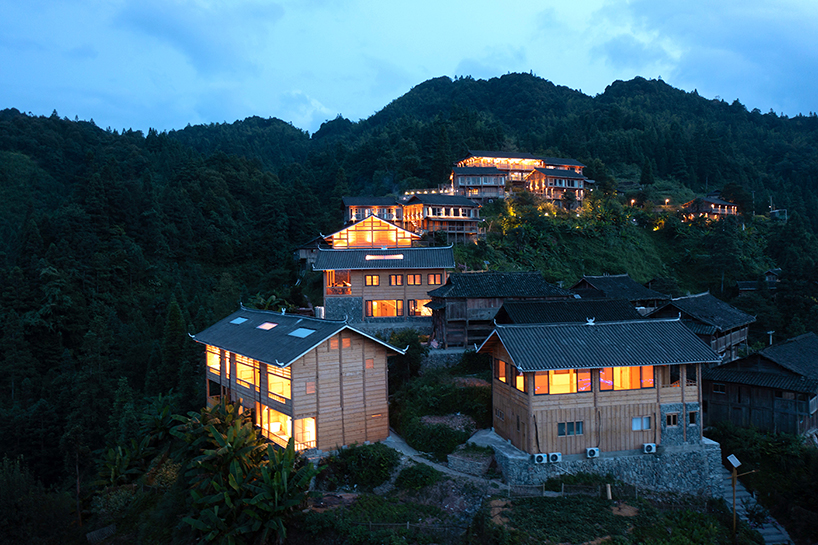
the timber houses of the Well hotel stand on the narrow ridge
sustainable materials and interior design
The team faced some challenges in order to arrange five rooms on a 20-meter-long narrow site and to make use of an open space between the restaurant and the guest room, and manage to open double entrances on both left and right side of the buildings. The old staircase was re-installed for the entrances and the old demolished timber of the original site was repurposed to form indoor wood flooring, following the sustainability principles. Concerning the materials, the main structures are made of newly purchased fir wood, while the interior flooring uses volcanic slate from Yunnan, and the earth plaster and bluestone wall materials were sourced locally.
Bluestones, wooden piles and laser-cut metal elements were selected. Lastly, the carefully planned thermal and sound insulation covers every room, providing a comfortable living experience. The environmental signage system was placed in a way that coexists harmoniously and integrates into the environment. Adding to the rest of the design details, a spacious balcony bathtub gives guests the opportunity to relax the body and the mind immersing in the calm mountains’ fresh air and beautiful scenery. The hotel’s design was an effort to ‘recall the silent unison between human and nature’ and to provide a healing experience in the forest’s relaxing and quiet environment, ATLAS team comments.
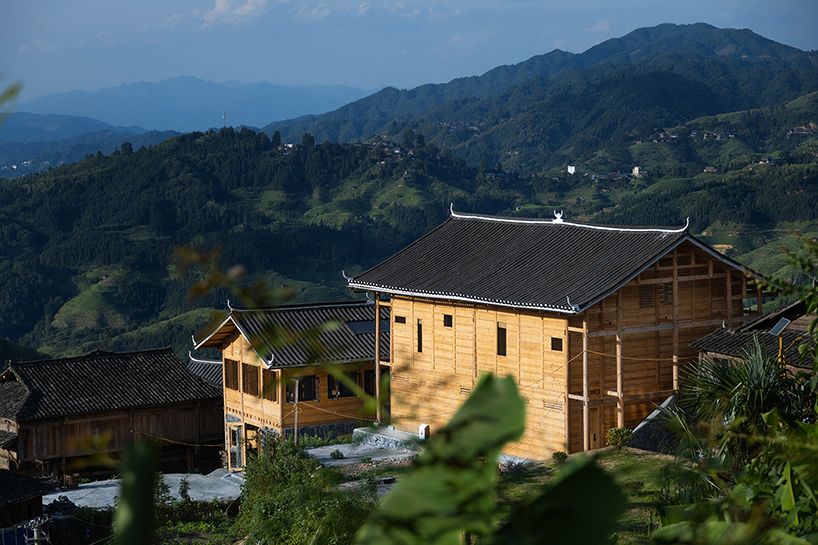
the Well hotel overlooking the rice terrace surroundings
well house is in A dialogue with the local community
The current project is aiming to connect the local culture and traditional craftsmanship with modern design. Looking back to a simpler rural life delivers sustainable healthy ideas for the architectural process. For the studio, ‘sustainability means an attitude of being humble’. Different natural resources contribute to a different outcome and require a more inclusive design strategies, as well as diverse development approaches to the cultural integration. Adding to the sustainable pursuit of local culture preservation, the project focuses on the lifestyle exploration and regeneration of southeastern Guizhou, in order to build a dialogue between modernity and tradition, opening the multi-dimensional perspective of ethnic culture in contemporary development.
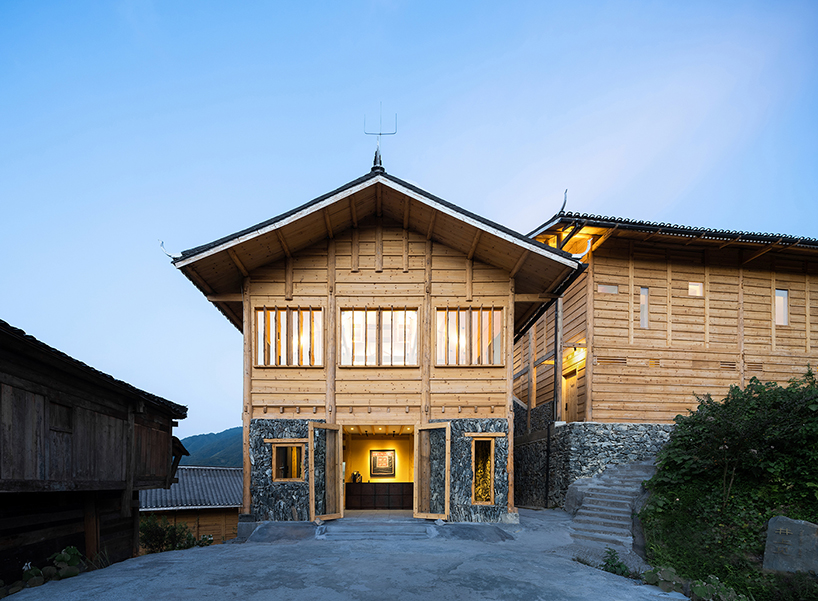
the modern timber frame structure of the facade
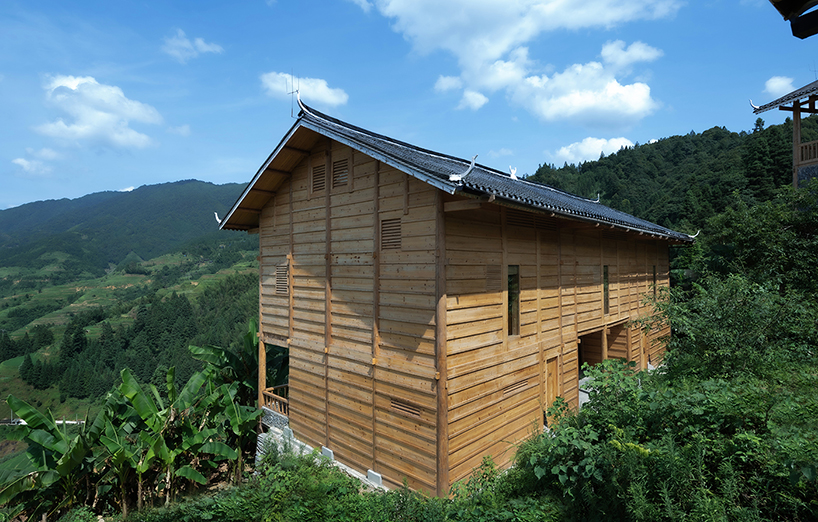
small pieces of timber create the house’s modern appearance
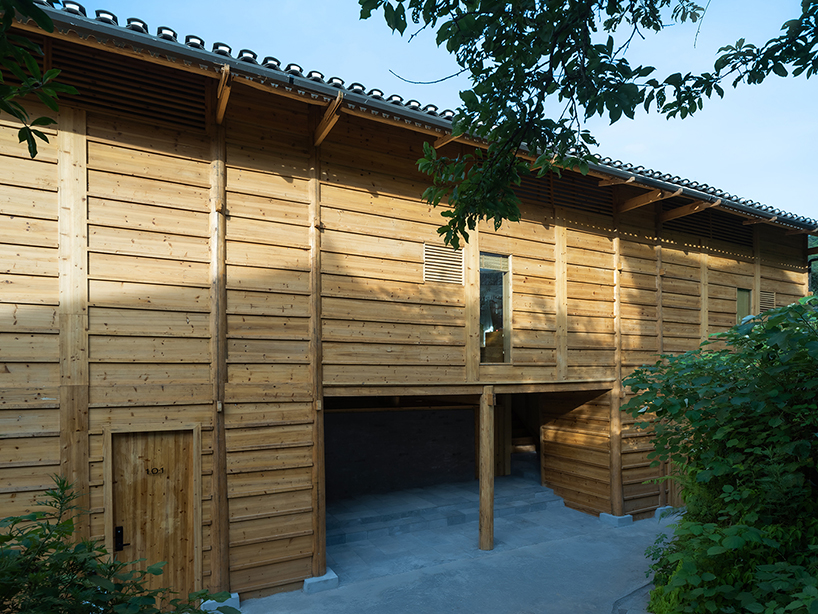
the main structures of the building are made of fir wood
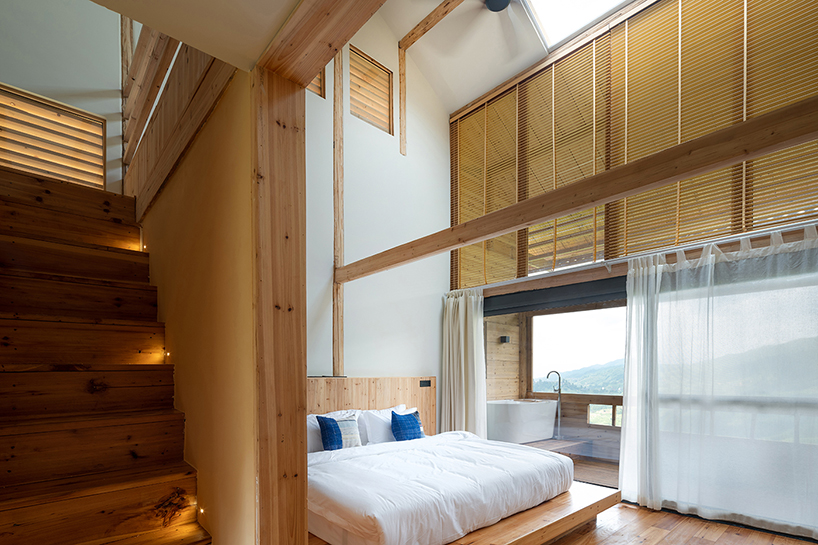
the arrangement of the interior provides a comfortable living experience
